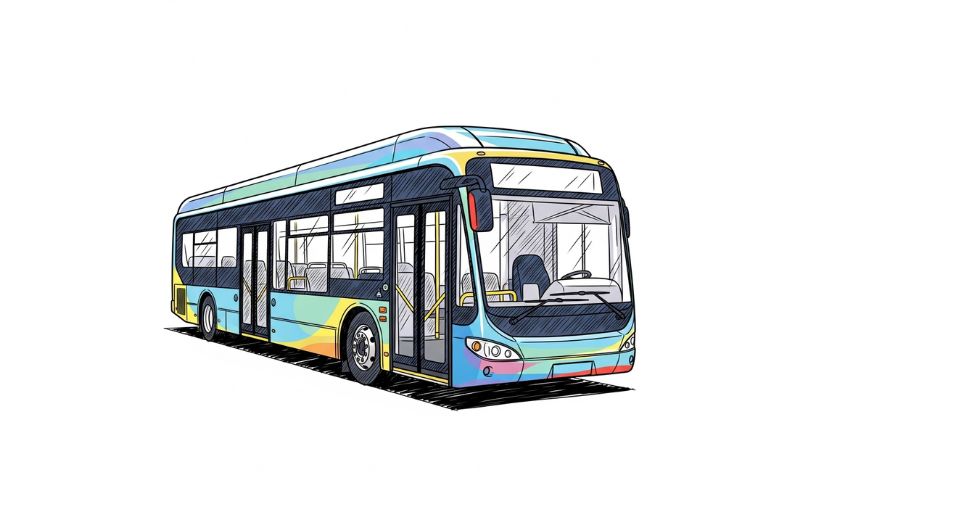
Jun 20, 2025

The latest report by Metastat Insight puts the focus on the evolution under way within the Global Apron Bus Market and presents a comprehensive view of how airport ground transport has been evolving to meet the changing needs of the aviation sector. As airport infrastructures develop further to accommodate more passenger movement and shifting patterns of operations, apron buses have secured a prominent place within the choreography of on-ground fluidity. Specifically intended to transfer passengers from terminal buildings to aircraft at remote stands, these buses are more than mere transportation connections more so, they are integral components of a broader logistical system that helps airports preserve smooth and efficient movement. Perhaps the most outwardly evident indication of an apron bus's significance is the connection it provides between passengers and the wider aviation system.
Where boarding bridges are utilized where they exist, not all planes can be placed at contact gates, particularly in times of congestion or growth. Apron buses are the players here as a flexible solution, transporting batches of travelers in an efficient, secure, and relatively comfortable manner. The in-transit experience in an apron bus, although ephemeral, is a contributing factor towards the general perception of airport efficiency and airline quality. Builders and operators have therefore been focusing on the ergonomic and design aspects of these buses. By appearance, the operation of apron buses seems simple. But in each trip lies a complex set of logistics dependent on timing, coordination, and faithfulness.
The vehicles have to comply with airport ordinances, adhere to guided routes, and usually operate in strict schedules governed by flight schedules of arrivals and departures. Operators also need to deal with fluctuating passenger levels, changes in weather, and multiple security protocols, all without disrupting airport flow. With these variables, the function of apron buses goes beyond mere ground transfer it is a representation of the flexibility and accuracy of airport management systems. Tailor-making has become an identifying factor in the manufacture of apron buses for various markets. Every airport has its own physical layout, climate conditions, and preferences when it comes to handling passengers, resulting in requirements for buses in unique configurations. Some call for larger passenger capacity to reduce the number of trips needed, while others can look for greater accessibility features to accommodate passengers with impaired mobility.
Environmental factors are also driving the need for changes in powering these vehicles. As concerns for carbon emissions and fuel usage grow, numerous operators are making the shift from conventional fuel engines to alternative power systems. The imperative to find a balance between operational cost and the need to be environmentally friendly has put new dynamics into the construction and deployment of apron buses. Technology integration is another thread that is being added to the apron bus experience. Fleet management programs, GPS tracking in real-time, and automated schedule management software are being increasingly utilized to ensure optimal use of buses across the day. These digital additions allow operators to minimize idle hours, eliminate excess fuel usage, and offer more uniform service. Furthermore, with airport environments becoming more integrated, the capability of apron buses to integrate with other operational systems gate allocations, baggage handling, and so on increases their strategic importance.
These cars today run not in singular isolation but as synchronized components of a broad network, with some level of sophistication in terms of design and software strength. Passengers today travel with certain expectations, which are influenced by international standards and past experiences. International airports serving air travelers are particularly attuned to the requirement for consistency in service quality. Consequently, apron buses are being designed with increasing emphasis on features enhancing ride quality and access. Low-floor boarding, panoramic windows, climate control, and onboard information systems have transitioned from comforts to virtual necessities. Although the flight-surface terminal segment of the trip is usually short, the span of time can make a difference in passenger perceptions, especially when delays or extended layovers add weight to every logistical detail.
Operational resilience is another unobtrusive but significant dimension of apron bus deployment. In contrast to other public transit systems, apron buses drive around in a very secure, restricted-access context. They need to be robust enough to handle high-frequency usage, tough against disparate weather, and prepared with safety features that can pass stringent airport standards. Schedules for maintenance have to be closely controlled in order to prevent downtime, and spare parts have to be in stock to avert service disruption. The aim is to have an effective service consistent with the larger goal of airport productivity and customer satisfaction. Based on the findings highlighted in the Global Apron Bus Market Report by Metastat Insight, it is apparent that apron buses are continuing to evolve as essential equipment in airport passenger logistics management.
Their development is not just an indication of technological improvement but also an overall change in operating expectations and user satisfaction. While airports contend with new realities of space use, environmental regulation, and service provision, apron buses continue to be an essential component of the solution. Their ongoing evolution in accommodating the emerging shape of the aviation industry guarantees their continued salience as facilitators of the free flow of travelers through many of the most congested and complicated transport nodes on the planet.
Drop us an email at:
Call us on:
+1 214 613 5758
+91 73850 57479